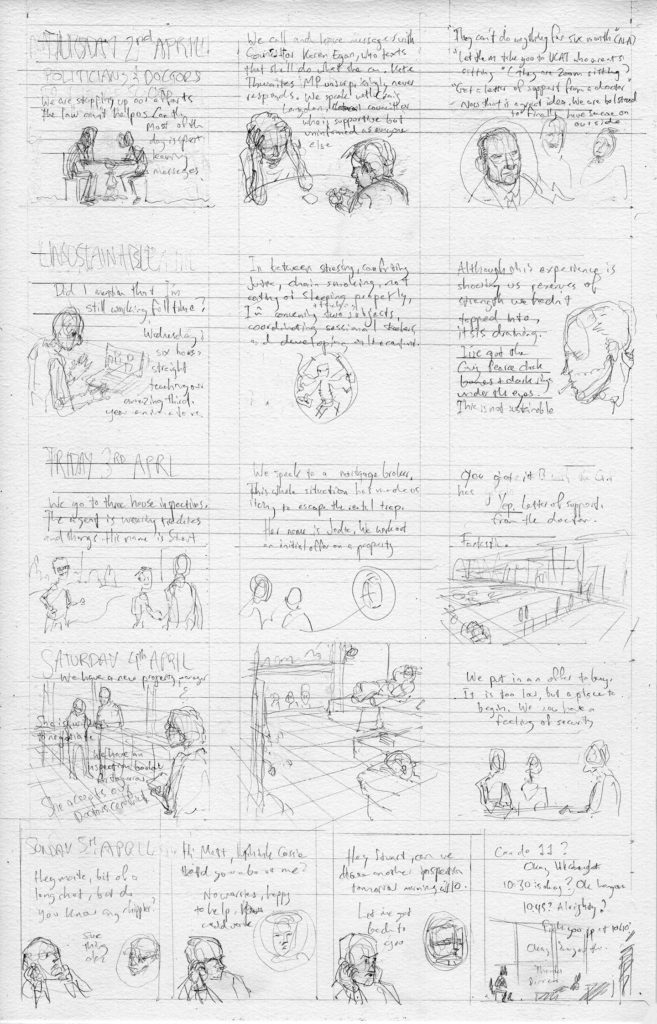During my doctorate, I made diary comics for over two years. Every day, a comic for the day. One of the problems was that the comics did not have a central theme. Nothing tied them together besides that they were taken from my life. Themes emerged, like cycling, cats, relationship stuff. The everyday, the minutia, little things, and random events. But in general, there was no running story, no cohesion.
There were advantages to this; I was able to experiment with media and style. I could create a humourous comic, a serious reflection, a full-page comic, a single panel. Black and white, color, digital or traditional. Anything goes.
Despite the odd output here and there I haven’t felt the need to make diary comics since I stopped at the end of 2015. Until recent events saw me driven to get into it again. Some things are too outrageous to let go. Some events are worth documenting, as a way to process, share, and remember.
That was the case when, after two years of rental tenancy, we were given the notice to vacate our rental property. In the middle of a global pandemic. So lucky me, now I have a unifying theme and a running storyline.
Here’s an overview of my process.
Plotting and thumbnails

I start with notes. An overview of the major ‘beats’ of the day- the main stuff that happens. Then I expand into visuals. If the scene is two people at a table, what does that look like? I generate options that I can develop, or that lead me to more options.
Pencils

Then i go to the full size drawing paper. For these comics, I’ve been using 11 x 17 inch Strathmore Vellum Bristol, legit standard US comic size. I’m drawing in square aspect ratio panels to keep uploading to Instagram easily. It’s a little limiting in terms of flexibility, but there’s something about working with constraints that counter-intuitively helps creativity.
At the pencil stage, I’m blocking the main characters, thinking about perspective and environment, and getting text in. Sometimes I’ll also use the side of the pencil to work in tonal shapes when a line approach isn’t working for me. It’s about getting marks on the paper.
Ink washes

Those marks eventually take form and shape, and a loose layout emerges. In my process there’s always some variation- i want to keep it fresh- but with these i went to ink wash next. Going ink wash over pencil means that i’m not constrained. I can let the washes do their own thing; the pencil guides me, but the wash makes the final call. This part of the process is fast and loose. I want to make mistakes. I want to mess it up a bit. Guided chaos is a far better artist than my conscious mind alone.
Ink- line

The ink wash reveals things. Layers of value form like sediment over time as the wet washes collide with dry layers, soak into the paper, merge with pencil marks. Tiny patterns emerge, intricate and full of potential. My job is to look into the patterns and pick out the ones that feel right. It’s no perfect process; it requires a unity of eye, hand, focus, and detachment. I resolve and I disregard, using line to solidify value and shape.
Watercolours

And finishing with watercolours over the top, something I’m still working out how best to incorporate with ink washes. And that’s an overview of process. Every stage of drawing requires different thinking; varying ratios of analysis, experimentation, structured process, chaos, automatism and control. It’s about finding the right mindset for each stage, keeping it fresh and enjoyable, and relying on past experience to stop happy accidents from becoming horrible mistakes.